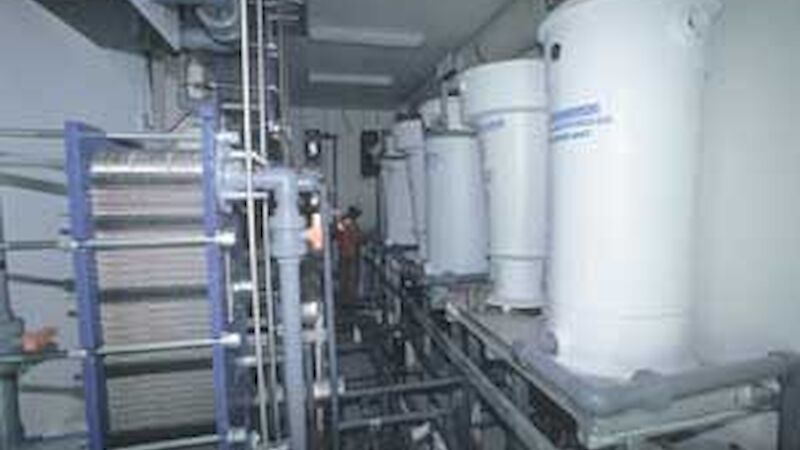Vital questions about an organism central to the Southern Ocean ecosystem — Antarctic krill, Euphausia superba – would remain unanswered without the ability to study them alive in captivity. The Australian Antarctic Division has maintained a live krill aquarium continuously since 1981 to enable year-round experiments on the animal's behaviour and physiology. Numbers are maintained with wild specimens caught each year from the Southern Ocean.
The old aquarium system, located in a 0°C cold-room, recirculates 4000 litres of sea water daily between the holding tanks and a variety of water filters. Two factors limit the holding capacity of this system to about 5000 krill: the limited space available for tanks and filtration systems, and the slow rate at which the biological filter can remove toxic ammonia waste (due to the low operating temperatures).
To alleviate these problems a dedicated marine research facility is being installed in a new science building at the AAD’s Kingston headquarters. This will include two research labs, a holding lab for krill and other marine species, a plant room for filtration equipment, a preparation room for production of food and monitoring of water quality, a toxicology lab for determining the potential effects of various man-made pollutants on Antarctic marine organisms and connection points to enable container labs from research vessels to be maintained alongside the facility.
The ambient air temperature of the facility will be 18°C, providing a more favourable environment for both staff and for experimental equipment. The sea water will be chilled through heat exchangers to maintain the tanks at 0°C and recirculated every hour through an array of filtration devices.
Before being filtered, the water will be warmed in a counter-current heat exchanger to raise its temperature to 20°C. At this temperature the rate of biological filtration will be considerably higher than has been possible in the existing facility, allowing the more efficient removal of ammonia.
These improvements will enable the new system to maintain more krill at higher feed rates, allowing research into aspects of reproduction and larval biology that was impossible before.
The facility will probably be the most advanced laboratory for the study of Antarctic marine biology in the world. It will greatly improve the ability of AAD scientists to study critical aspects of the life history of Antarctic marine organisms and enhance the AAD’s reputation as a key international centre for the study of experimental marine biology of Antarctic organisms.
The new research facility is expected to be operational by December 2002.
Rob King,
Antarctic Marine Living Resources Program, AAD

